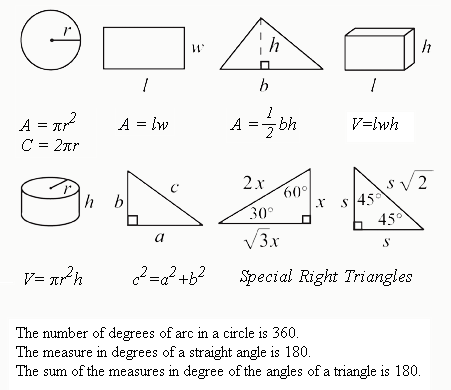Introduction to the SAT Math Test
Page 1
Introduction to the SAT Math Test
How SAT Math Is Different from Classroom MathMost students are surprised to find out just how basic SAT math is: arithmetic, geometry, algebra, and a smattering of elementary logic and probability. Yes, the SAT Math Test for the first time now includes a bit of algebra IInot muchbut most of the concepts tested were familiar to you by ninth grade, if not earlier. You won't need the quadratic formula, or any trigonometry; and you won't need to prove any geometry theorem. Indeed, one of the problems many students face on the SAT Math Test is remembering their basic math from junior high school.
As I'll remind you frequently in the math articles, you already know all of the math covered on the SAT. The trick is learning how to reason in new ways with fairly basic math concepts.
The SAT Math Test consists of 54 questions in three sections. Forty-four of the questions are regular, multiple-choice questions. Ten of the questions are more like the math problems you solve in school. These questions do not provide choices; you must work out the answer to these "student response" questions and "grid-in" your result into special boxes on your answer sheet. Unlike your math tests in school, however, you will not receive any "partial credit" for your work.
More Good News: They Provide Most of the Formulas You Need
Here are the instructions you'll find on each section of the SAT Math Test:
Directions: You may use any available space in your booklet for scratch work, but only your answer sheet will be graded. When you have determined the answer to a question, fill in the corresponding oval on your answer sheet.
Notes:
- You may use a calculator. All numbers used are real numbers. All figures lie in a plane unless otherwise indicated.
- Figures that accompany problems are intended to provide information useful in solving the problems. They are drawn as accurately as possible EXCEPT when a specific problem states that the figure is not drawn to scale.
 |
You probably know most or all of these formulas already, but spend a minute to review this information so you do not waste precious seconds on the actual exam doing so. The only important facts in the instructions are the formulas; the "notes" will not change significantly.
The Bad News: The SAT Math Test Camouflages Simple Concepts
If the math on the SAT is so basic and it is you may be wondering how anyone can find it difficult. One of the big reasons that students have trouble on the SAT Math Test is that the test writers do an excellent job of transforming very simple math concepts so that these concepts are barely recognizable. But the real reason students have trouble is that the SAT tests their knowledge very differently from the way you're used to being tested in school.
Never let an unfamiliar term on an SAT math problem bamboozle you. The test writers often stumble in their efforts to remove ambiguities from problems that only a mathematics professor would quibble withcreating needless confusion for hundreds of thousands of SAT students. One of my favorite terms in this regard is "non-overlapping," which just refers to figures that share at most a line in common.